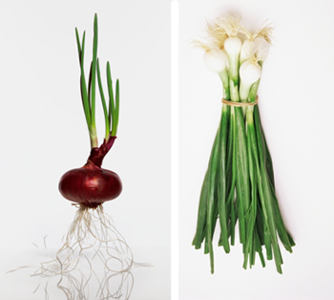Dec 17, 2025
Dec 17, 2025
 The herbaceous plant onion grows in temperate zones. It belongs to family “Liliaceae” and has latin name “Allium Cepa”. The plant reaches a height of 2-5 ft and bears cluster of greenish white flowers. Onions develop from the base of leaves to form underground bulbs. Seeds of onion are black in colour.
The herbaceous plant onion grows in temperate zones. It belongs to family “Liliaceae” and has latin name “Allium Cepa”. The plant reaches a height of 2-5 ft and bears cluster of greenish white flowers. Onions develop from the base of leaves to form underground bulbs. Seeds of onion are black in colour.
Onion is known as Phalandu in Sanskrit. Its medicinal properties and physical properties are explained in texts of ayurveda. Ayurveda acharyas have explained the uses of onion in various health conditions and have classified onions based on their colours. “Rakta phalandu” (Red coloured onion) and “shweta phalandu” (white coloured onion) are two varieties of onions.
According to ayurveda onions are heavy to digest and slimy to touch. They taste sweet and are pungent to smell. They increase fire component of body (ushna veerya) and acquire sweet taste after digestion (madhura vipaka). Its seeds and fruit are used in ayurvedic preparations.
Medicinal Uses of Onion in Different Health Conditions:
31-Aug-2010
More by : Dr. Savitha Suri

|
I've discovered that onion and tamra supplement work well together. I think tamra bhasma and onion would work together too. I cook the onion in water for 20 minutes with ghee, and when the water is gone I fry it for 5 minutes. I eat this with oats or barley, extra ghee or butter, and jaggery. I have not been able to get rid of bad vata problems before now but this therapy is working for me. I take slippery elm in plenty during the day (it's dense, slimy, sweet, astringent, soft - helps with healing, and balances the doshas if not used in excess). I think this is a good option for Westerners who have better access to these medicines. Jaggery and sugar with molasses still there (sucanat etc) is available for Westerners at health food stores. Sleep problems going away and dreams are nice now! |